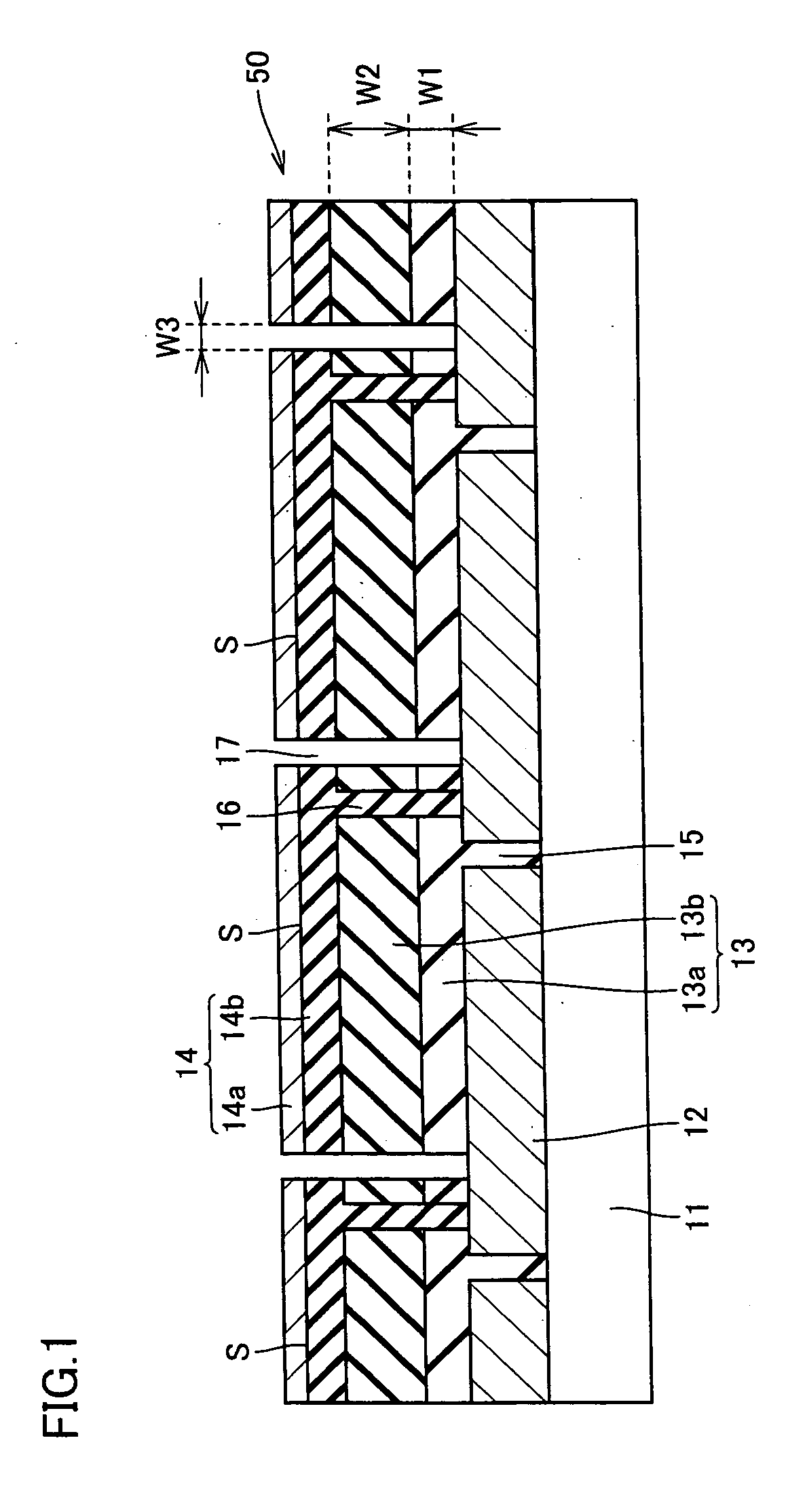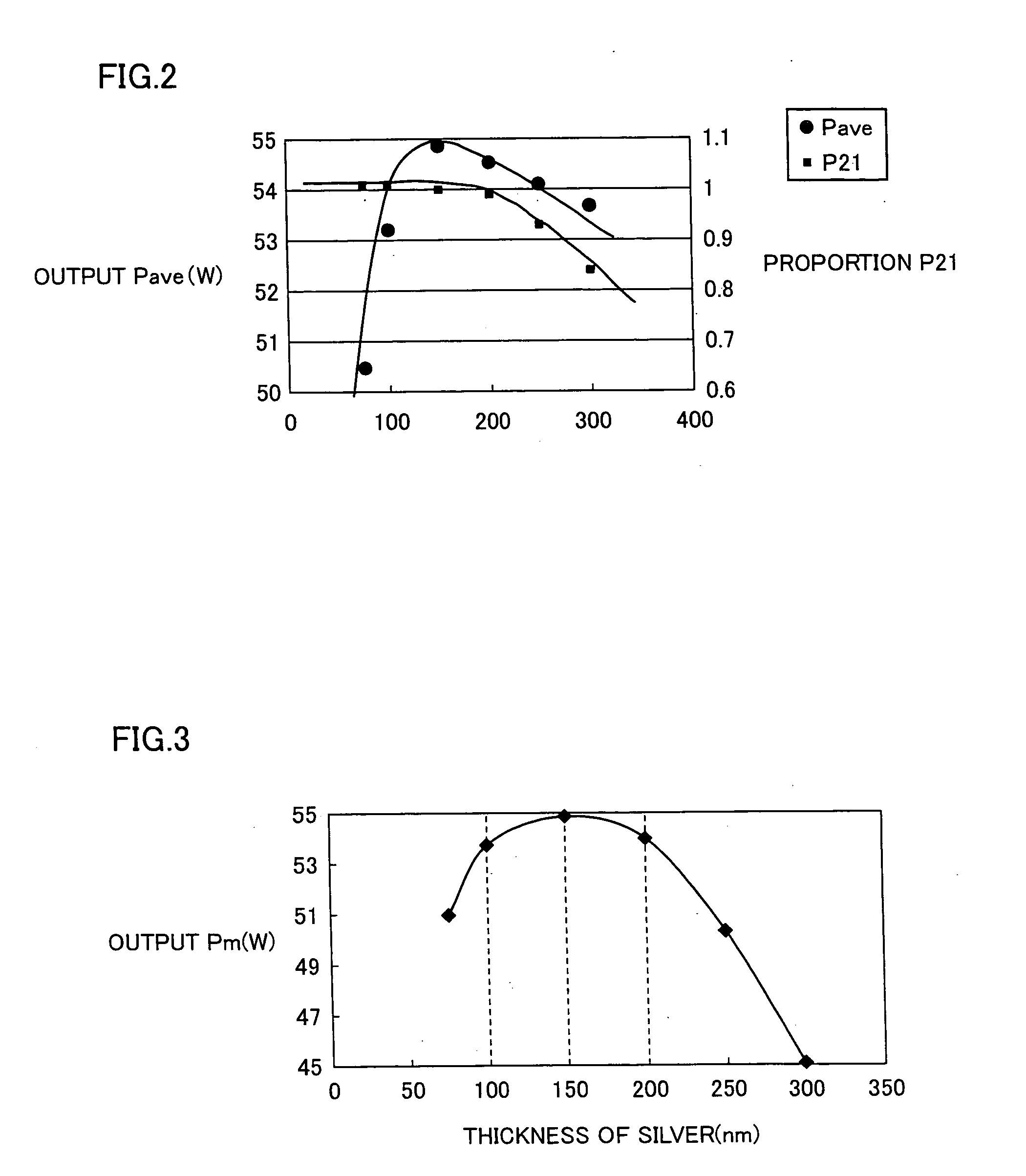Solar battery and manufacturing method thereof
a solar battery and manufacturing method technology, applied in the field of solar batteries, can solve the problems of disadvantage in appearance, deterioration of solar battery properties, and deterioration of properties and/or problems in appearance, and achieve the effect of reducing manufacturing costs and excellent yield
- Summary
- Abstract
- Description
- Claims
- Application Information
AI Technical Summary
Benefits of technology
Problems solved by technology
Method used
Image
Examples
example 1
[0102] Using a glass substrate having a thickness of about 4.0 mm as insulation translucent substrate 11, on the glass substrate (substrate size 560 mm×925 mm), SnO2 (tin oxide) was deposited by thermal CVD method as transparent conductive film 12.
[0103] Next, using fundamental harmonic of YAG laser, patterning of transparent conductive film 12 was performed. By setting the light to enter from the glass surface, transparent conductive film 12 was separated into rectangular pieces and surface electrode separation line 15 was formed.
[0104] Thereafter, the substrate was subjected to an ultrasonic cleaning by pure water, and thereafter upper cell 13a was formed. Upper cell 13a was formed of a-Si:Hp layer, a-Si:Hi layer, and a-Si:Hn layer, and the total thickness W1 was set to be about 0.25 μm. It should be noted that p-layer and n-layer may be μc-Si:H.
[0105] Next, lower cell 13b was formed. Lower cell 13b was formed of μc-Si:Hp layer, μc-Si:Hi layer, and μc-Si:Hn layer, and the total...
example 2
[0111] Processes were performed similarly to Example 1 except that the thickness of silver (back surface metal electrode) was set to be 100 nm. Similarly to Example 1, the back surface electrode separation line was observed by a microscope, and almost no burr was found. FIG. 2 shows average output Pave (W) and proportion P21=(second average output / first average output) of a solar battery thus produced. FIG. 3 shows average output Pm (W) after formed in a module (i.e., Pm=Pave×P21).
example 3
[0112] Processes were performed similarly to Example 1 except that the thickness of silver (back surface metal electrode) was set to be 200 nm. Similarly to Example 1, the back surface electrode separation line was observed by a microscope, and almost no burr was found. FIG. 2 shows average output Pave (W) and proportion P21=(second average output / first average output) of a solar battery thus produced. FIG. 3 shows average output Pm (W) after formed in a module (i.e., Pm=Pave×P21).
PUM
 Login to View More
Login to View More Abstract
Description
Claims
Application Information
 Login to View More
Login to View More - R&D
- Intellectual Property
- Life Sciences
- Materials
- Tech Scout
- Unparalleled Data Quality
- Higher Quality Content
- 60% Fewer Hallucinations
Browse by: Latest US Patents, China's latest patents, Technical Efficacy Thesaurus, Application Domain, Technology Topic, Popular Technical Reports.
© 2025 PatSnap. All rights reserved.Legal|Privacy policy|Modern Slavery Act Transparency Statement|Sitemap|About US| Contact US: help@patsnap.com



